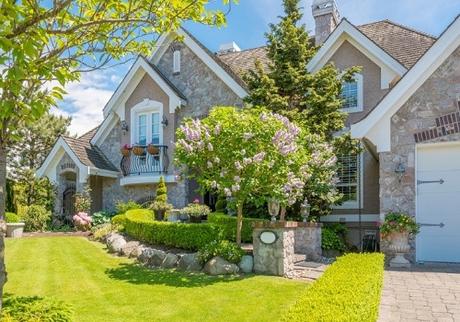If you’re a home gardener, you’re probably familiar with planting flowers. You might study up on them before you buy, but most of us just read the seed packet or the tag on a potted specimen at the nursery and decide to take a chance. If we’ve picked the wrong variety or planted it in the wrong spot, it’s not a big deal. When it comes to trees and shrubs, though, it’s a different story.
It takes a good bit of knowledge to choose and place the trees and shrubs that are going to form the backbone of your landscape. Because they’re intended to last as long as decades, it’s important to be sure they’ll be able to thrive and look right. Once they’re established and growing to their full height and width, it’s a major task to remove them.
Here are some selection and planting guidelines to follow:

Diagram the Area
The first thing to do is plot out a map of your outdoor area to see where the trees and shrubs can go. Great art isn’t the point, but you do have to be fairly accurate. If you want to be fancy about it, you can use software designed for the project, but for your purposes, a simple diagram should do.
- To begin, draw a rough outline of your house and property. Then arm yourself with a long tape measure (or better still, a laser measuring tool) and head outside. First measure the length and width of your front or backyard. Then measure the exterior of your house and where it sits on the property. Last, sketch in any permanent features like paths, fences, patios, fountains, ponds, pools, sheds and so on. Mark the measurements on your drawing as you go.
- Now transfer your figures to a final diagram on graph paper. If you want to keep it to one sheet, use paper laid out with grid lines in 1/4 inch to 1-foot scale. You can buy a pad of graph paper at any stationery store and you can also find printable templates online. In this scale, every foot you measure on the ground will translate to one-quarter inch on the paper. You could also use a larger-scale grid and tape pages together, but the finished product will be larger in both directions and could be pretty awkward to manipulate.
- Once you’ve got the main elements on the graph paper, go back and place the elements you didn’t measure the first time, like existing flower beds, hedges, trees and anything else you’d like to leave where it is. It’s also important to make notations of where the house doors and windows are, so your new landscaping doesn’t obstruct them.
- On a corner of the page, draw a compass star and mark which direction is north.
Study Sun and Shade Patterns
Although the angle of the sun changes throughout the year, in general, there will be parts of your landscape that get full sun and other parts that are always or usually in shade. Watch periodically through a day to see what the patterns are because if a plant isn’t suited to its placement, it’s not going to thrive.
Decide What to Plant
Trees and shrubs can soften the look of your home’s foundation and border fencing, enhance and highlight entries, add privacy, define garden beds and other features, add variety in height, shape, and texture and provide color in every season. They’re also useful in lowering your heating or air conditioning costs by shielding your home from cold, heat and wind.
Because you’re planting for the long term, consider how much water a particular variety will require, and how far and deep tree roots can be expected to extend. One more thing to consider when deciding about trees especially is how much you’re willing to deal with in terms of dropping leaves and flowers. Crape myrtles and jacarandas, for example, put out exhilarating displays of colorful blooms that ultimately drop on your lawn and hardscape for weeks thereafter. And deciduous trees are beautiful when they’re lush, but compared to evergreens, are bare in winter. While performing this research, you might also look into companies in your area that provide tree and shrub fertilization so you don’t have to
In Conclusion
Once you’ve decided what kind of plantings you’d like and how much room you have to plant them, it’s time to select the actual specimens. Bring your diagram and consult with an expert at your garden center who will know which varieties are best for your needs. And once you’ve gotten your new plantings in place, protect your investment with regular insect and disease control and pruning to keep everything in top condition.
